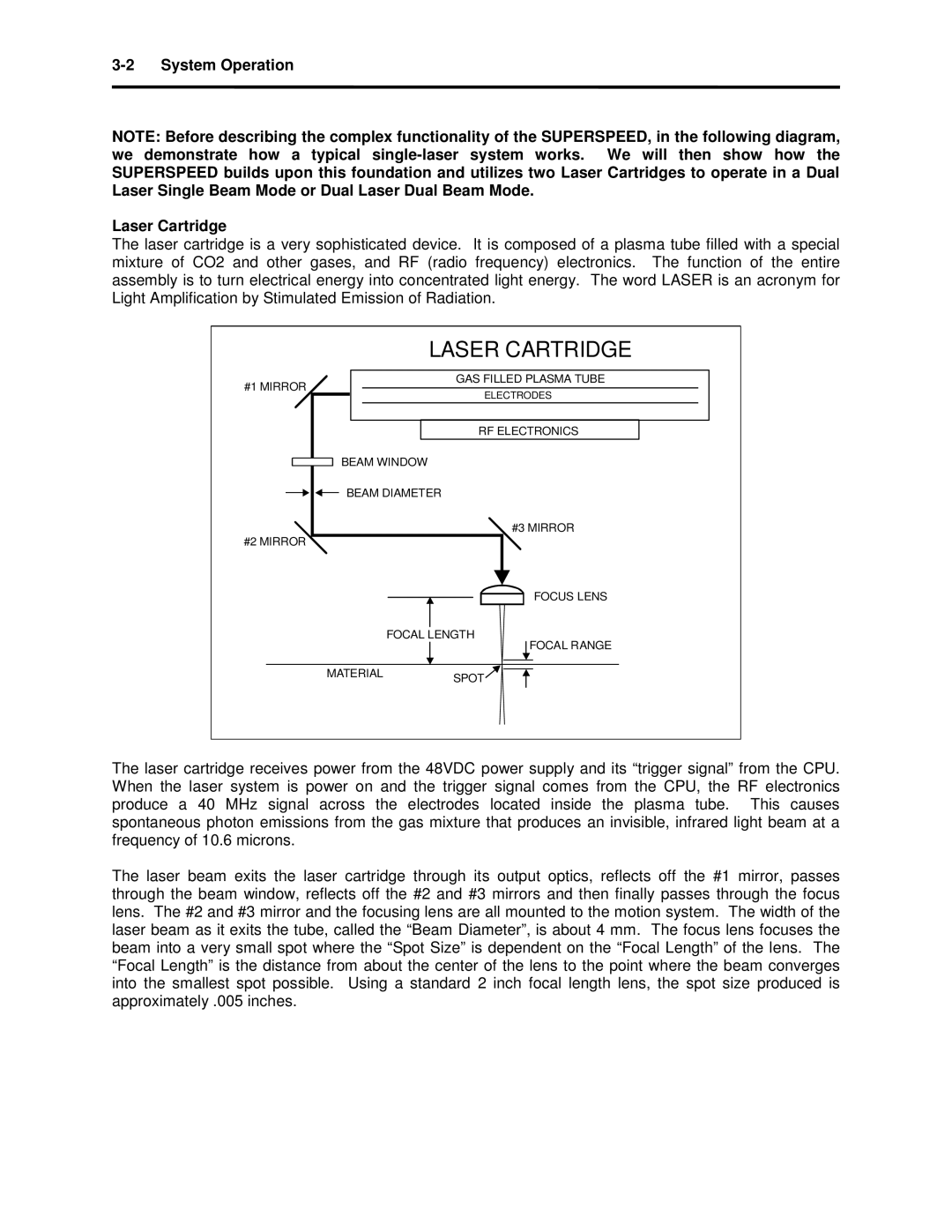
3-2 System Operation
NOTE: Before describing the complex functionality of the SUPERSPEED, in the following diagram, we demonstrate how a typical
Laser Cartridge
The laser cartridge is a very sophisticated device. It is composed of a plasma tube filled with a special mixture of CO2 and other gases, and RF (radio frequency) electronics. The function of the entire assembly is to turn electrical energy into concentrated light energy. The word LASER is an acronym for Light Amplification by Stimulated Emission of Radiation.
LASER CARTRIDGE
#1 MIRROR
GAS FILLED PLASMA TUBE
ELECTRODES
RF ELECTRONICS
BEAM WINDOW
BEAM DIAMETER
#3 MIRROR
#2 MIRROR
FOCUS LENS
FOCAL LENGTH
FOCAL RANGE
MATERIALSPOT![]()
The laser cartridge receives power from the 48VDC power supply and its “trigger signal” from the CPU. When the laser system is power on and the trigger signal comes from the CPU, the RF electronics produce a 40 MHz signal across the electrodes located inside the plasma tube. This causes spontaneous photon emissions from the gas mixture that produces an invisible, infrared light beam at a frequency of 10.6 microns.
The laser beam exits the laser cartridge through its output optics, reflects off the #1 mirror, passes through the beam window, reflects off the #2 and #3 mirrors and then finally passes through the focus lens. The #2 and #3 mirror and the focusing lens are all mounted to the motion system. The width of the laser beam as it exits the tube, called the “Beam Diameter”, is about 4 mm. The focus lens focuses the beam into a very small spot where the “Spot Size” is dependent on the “Focal Length” of the lens. The “Focal Length” is the distance from about the center of the lens to the point where the beam converges into the smallest spot possible. Using a standard 2 inch focal length lens, the spot size produced is approximately .005 inches.
